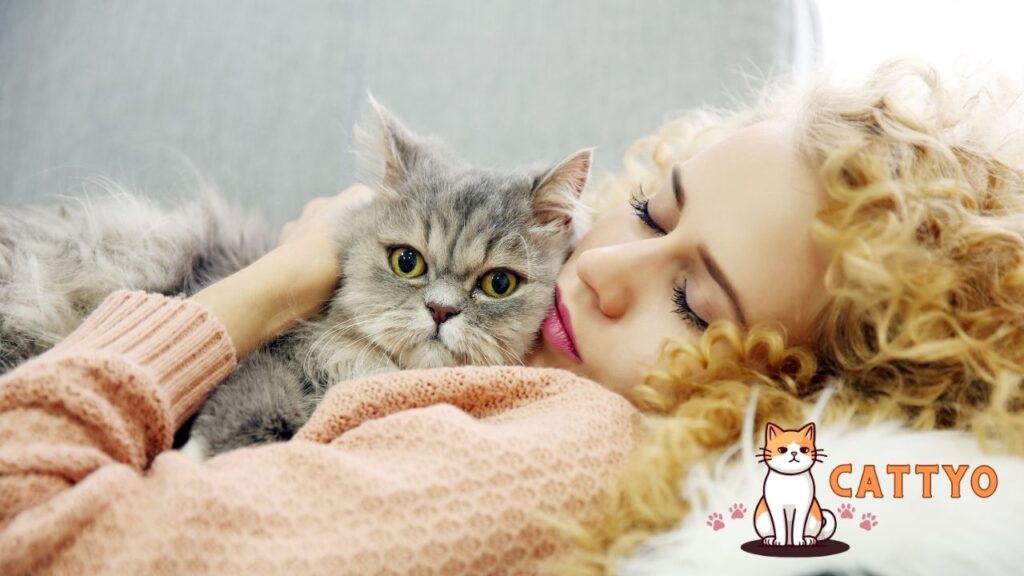Bathing a cat can be a daunting task for many pet owners. Cats are known for their aversion to water, and the mere sight of a bathtub can send them into a frenzy. However, there are times when a bath becomes necessary, well, due to medical reasons, flea infestations, or getting into something messy. Understanding how to calm a cat for a bath is crucial to ensure the process is as stress-free as possible for both you and your feline companion.
Understanding Feline Behavior
Cats are creatures of habit and can be sensitive to changes in their environment. Their aversion to water is often rooted in unfamiliarity and the loss of control during the bathing process. Recognizing signs of stress, such as flattened ears, dilated pupils, or a twitching tail, can help you gauge your cat’s comfort level and adjust your approach accordingly.

Preparing for the Bath
Preparing your cat for a bath is all about timing, environment, and having the right tools ready. A calm setting and gentle handling make the process smoother and less stressful for both you and your cat.
1. Choose the Right Time
Select a time when your cat is most relaxed, typically after a meal or play session. Avoid bathing during their peak activity periods, such as dawn or dusk, when they are more energetic and less likely to cooperate.
2. Gather Necessary Supplies
Having all your supplies ready before starting can prevent unnecessary delays and reduce stress for your cat. Essential items include:
- Cat-specific shampoo
- A non-slip mat
- Towels
- A cup or gentle sprayer for rinsing
- Treats for positive reinforcement
3. Create a Calm Environment
Set the mood by playing soft, calming music and ensuring the room is warm and free from drafts. Dim the lights to create a soothing atmosphere.
Techniques to Calm Your Cat
Bathing a cat may seem tricky, but with the right steps, you can make it a safe and stress-free experience. Follow this easy guide to help your cat stay calm and clean during bath time.
1. Gradual Introduction to Water
Acclimate your cat to water by gently wetting their paws during regular grooming sessions. This gradual exposure can help reduce anxiety when it’s time for a full bath.
2. Use of Calming Aids
Consider using calming sprays or diffusers that release feline pheromones to create a sense of security. Natural remedies, such as lavender or chamomile, can also have a soothing effect.
3. The Cozy Towel Technique
Wrapping your cat in a warm towel, leaving only their head exposed, can provide a sense of security and prevent sudden movements during the bath.
4. Positive Reinforcement
Reward your cat with treats and gentle praise throughout the process. This positive association can make future baths more manageable.
Step-by-Step Bathing Process
With gentle handling and a clear step-by-step routine, you can bathe your cat without fear or fuss. Patience, preparation, and calm movements are key to a smooth experience.

- Brush Your Cat: Remove tangles and loose fur to make the bathing process smoother.
- Prepare the Bath: Fill the tub or sink with a few inches of lukewarm water.
- Gently Wet Your Cat: Using a cup or sprayer, slowly wet your cat’s body, avoiding the head.
- Apply Shampoo: Use a small amount of cat-specific shampoo, lathering gently.
- Rinse Thoroughly: Ensure all shampoo is rinsed out to prevent skin irritation.
- Dry Your Cat: Wrap your cat in a towel and gently pat dry. Avoid using a hairdryer unless your cat is accustomed to it.
Post-Bath Care
After the bath, provide your cat with a warm, quiet space to relax. Offer treats and engage in gentle play to reinforce positive associations with the bathing experience.
FAQs On How to calm a cat for bath
Q: How often should I bathe my cat?
A: Most cats do not require regular baths, as they groom themselves. However, occasional baths may be necessary for medical reasons or if they get into something messy.
Q: Can I use human shampoo on my cat?
A: No, human shampoos can be too harsh for a cat’s sensitive skin. Always use a shampoo specifically formulated for cats.
Q: What if my cat becomes aggressive during the bath?
A: If your cat shows signs of aggression, stop the bath immediately. It’s essential to prioritize safety and consult a veterinarian or professional groomer for guidance.
Final Words
Bathing your cat doesn’t have to be a stressful experience. By understanding your cat’s behavior, preparing adequately, and using calming techniques, you can make bath time a more pleasant experience for both of you. Remember, patience and positive reinforcement are key to success.


